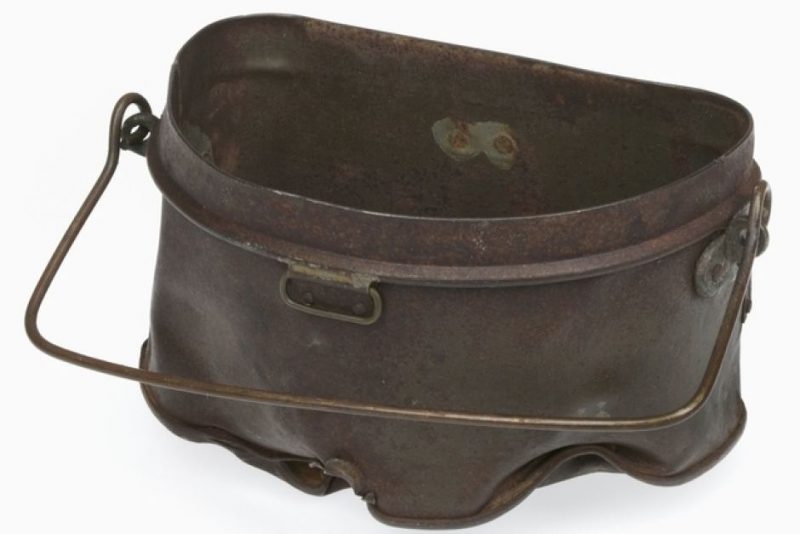As she prepared for the commemorations of the 100th anniversary of World War I, Dianne Rutherford, a curator at the Australian War Memorial (AWM), made a surprising discovery.
On the bottom of a mess tin, the name E Walker 1 AIF was scratched in.
“You can still read it today even though the tin’s been rusted,” she said.
The tin was collected by staff from the Australian War Records Section in 1919, from the area around Lone Pine. Over a two-year period, the staff acquired about 25,000 objects including personal items left on battlefields. This became the basis of the AWM collection in Canberra.
AWM had never recorded the name of the owner so Rutherford determined to find him herself. She first checked the Roll of Honor and found nine E Walkers who died during the war. Three of them were killed at Gallipoli and only one was killed in the battle of Lone Pine. His name was Private Eric De Witte Talmage Walker, aged 21, of the 1st Battalion, one of may Australians killed at Gallipoli.
Rutherford was able to access his digitized personal service file from the National Archives of Australia. She found that he signed his name with a large, distinctive ‘K’ that matched the signature on the tin.
“He’s scratched his name in cursive and it matches his signature on his enlistment papers,” Rutherford said. “Ninety years after [the mess tin] was collected, a person’s story was put to it.”
Using other online resources, Rutherford was able to find Walker’s story.
He had enlisted in Sydney in January 1915 at 20 years of age. Since he was under 21, he needed permission from his parents, William and Jane Walker of Wahroonga. He had eight other siblings: Charles, William, Ruth, Frank, Frederick, Harold, Arthur, and Esther. Walker listed his occupation as laborer. He served six months with cadets and six months with a citizen military force called the Militia.
He arrived at Gallipoli a month after the first landing and died less than three months later in the Battle of Lone Pine with 2,000 other Australian soldiers. This was an effort to end the stalemate at Gallipoli.
It is believed that his remains are buried in the Lone Pine cemetery. His name is listed on a memorial headstone at that cemetery and also on the Wahroonga War Memorial.
Rutherford said that it is sad to think of Walker’s death at such a young age, but she is pleased that the memorial can share his story. “What I think is amazing is that we’ve been able to identify him – we actually have an object that he had, that he used,” she said.
“He’s not just a name on a memorial; he’s a person and he had an experience, and we’ve got a piece of that experience here at the memorial.”
